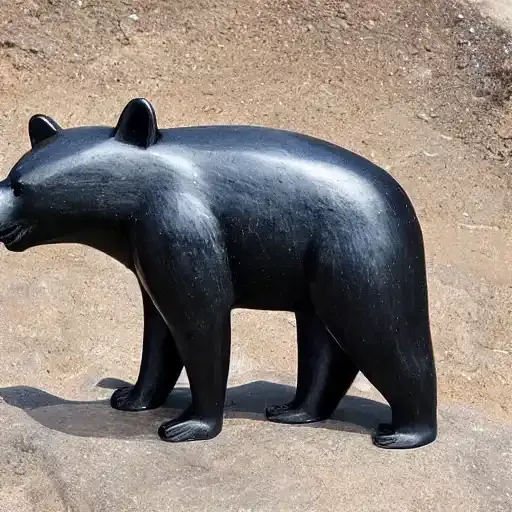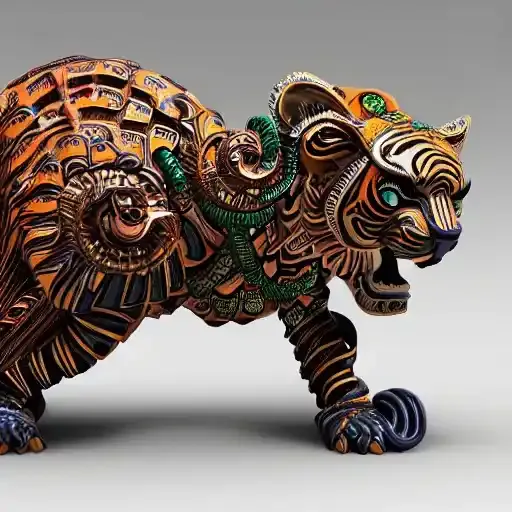
The oldest known artwork in China is the pottery figurine of a wild boar, dating back to the Neolithic period, around 5000-3000 BCE. It was discovered in the Zoudunying culture site in Xianyang, Shaanxi province. Artistic expression in China has a long and rich history, and many ancient artifacts, sculptures, pottery, and other works of art have been found and preserved, providing a glimpse into the artistic and cultural heritage of this great civilization.
History

The history of art in China dates back to prehistoric times, and has developed and evolved over thousands of years, shaped by cultural, political, and religious influences.
During the Neolithic period (5000-3000 BCE), early Chinese art was characterized by simple pottery and sculptures, often depicting animals and nature. The Shang Dynasty (1600-1046 BCE) saw the emergence of bronze casting, and the creation of intricate bronze vessels, including the famous Shang dynasty bronze tripod.
The Zhou Dynasty (1046-256 BCE) saw the development of a sophisticated and nuanced form of writing, calligraphy, which became a major art form in its own right. During the Han Dynasty (206 BCE-220 CE), pottery and sculpture flourished, with the creation of beautiful terra cotta soldiers, among other works.
The following dynasties, such as the Tang (618-907 CE) and Song (960-1279 CE), saw the flourishing of different forms of art, including painting, calligraphy, and poetry. During the Ming (1368-1644 CE) and Qing (1644-1912 CE) dynasties, art became more focused on capturing the natural world, with the creation of intricate landscapes, portraits, and still-life paintings.
Today, China continues to have a rich and vibrant art scene, with contemporary artists pushing the boundaries of traditional forms, while also preserving and drawing inspiration from the country's long artistic heritage.
How do these arts influence Chinese culture in modern times?
The art of ancient China has had a lasting impact on Chinese culture and continues to influence the arts in modern times. Here are a few ways in which ancient Chinese art has influenced contemporary culture:
- Calligraphy: Calligraphy is considered one of the highest forms of art in Chinese culture, and its influence can be seen in modern graphic design, advertising, and even fashion.
- Painting: Ancient Chinese painting techniques, such as brushwork, composition, and use of color, continue to be studied and imitated by modern Chinese painters.
- Poetry: The rich literary tradition of ancient China has inspired generations of poets, writers, and artists, and continues to be a source of cultural pride and identity.
- Architecture: Ancient Chinese architecture, with its emphasis on symmetry, balance, and the use of natural materials, has influenced modern architects in China and around the world.
- Ceramics: Ancient Chinese ceramics, with their intricate designs and use of vibrant colors, have inspired modern ceramic artists and designers.
Overall, the art of ancient China has had a profound influence on Chinese culture and continues to shape and inspire the arts in modern times. It serves as a reminder of the rich cultural heritage of China and its long history of artistic expression and creativity.
If you like my article don't forget to follow me and share.
I was motivated by
@juliakponsford @brittandjosie @inkwalls
Thanks
Arthur Dexmark
If you want this art to be on your tee-shirts or Hoodie ( you can as well order for it from our E-commerce store : https://centuryhackland.redbubble.com/